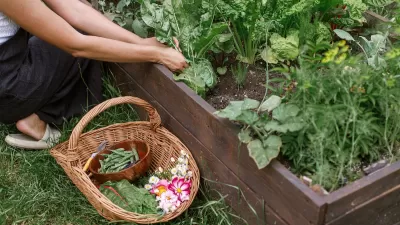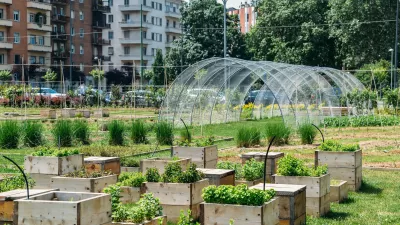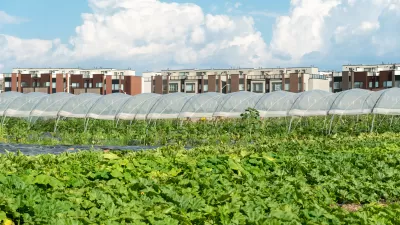A recent study found that a city could completely live off food grown from urban agriculture. Sharanbir Grewal, the study's author, discovered in his analysis of Cleveland that the city could produce up to 48 percent of the city's fresh produce.
Grewal's solution to increase the output from urban agriculture is based on converting vacant lots into farms, and residential lots producing crops.
"In the first scenario, Grewal found that if Cleveland converted 80% of its vacant lots into farms it could produce 22% to 48% of the city's demand for fresh produce (vegetables and fruits) depending on the type of farming. It could also produce 25% of poultry and shell eggs, and 100% of honey.
"In addition, if Cleveland used 80% of every vacant lot and 9% of every occupied residential lot, the city could generate between 31% and 68% of the needed fresh produce, 94% of poultry and shell eggs, and 100% of honey."
"Growing food in the city would also keep $29-115 million in the local economy."
FULL STORY: Could cities rely 100% on urban agriculture for their food?

Alabama: Trump Terminates Settlements for Black Communities Harmed By Raw Sewage
Trump deemed the landmark civil rights agreement “illegal DEI and environmental justice policy.”

Planetizen Federal Action Tracker
A weekly monitor of how Trump’s orders and actions are impacting planners and planning in America.

The 120 Year Old Tiny Home Villages That Sheltered San Francisco’s Earthquake Refugees
More than a century ago, San Francisco mobilized to house thousands of residents displaced by the 1906 earthquake. Could their strategy offer a model for the present?

In Both Crashes and Crime, Public Transportation is Far Safer than Driving
Contrary to popular assumptions, public transportation has far lower crash and crime rates than automobile travel. For safer communities, improve and encourage transit travel.

Report: Zoning Reforms Should Complement Nashville’s Ambitious Transit Plan
Without reform, restrictive zoning codes will limit the impact of the city’s planned transit expansion and could exclude some of the residents who depend on transit the most.

Judge Orders Release of Frozen IRA, IIJA Funding
The decision is a victory for environmental groups who charged that freezing funds for critical infrastructure and disaster response programs caused “real and irreparable harm” to communities.
Urban Design for Planners 1: Software Tools
This six-course series explores essential urban design concepts using open source software and equips planners with the tools they need to participate fully in the urban design process.
Planning for Universal Design
Learn the tools for implementing Universal Design in planning regulations.
Clanton & Associates, Inc.
Jessamine County Fiscal Court
Institute for Housing and Urban Development Studies (IHS)
City of Grandview
Harvard GSD Executive Education
Toledo-Lucas County Plan Commissions
Salt Lake City
NYU Wagner Graduate School of Public Service





























